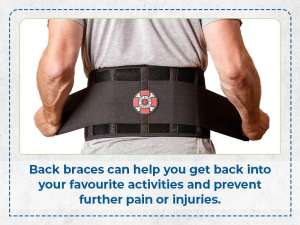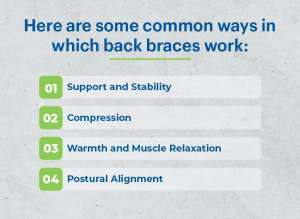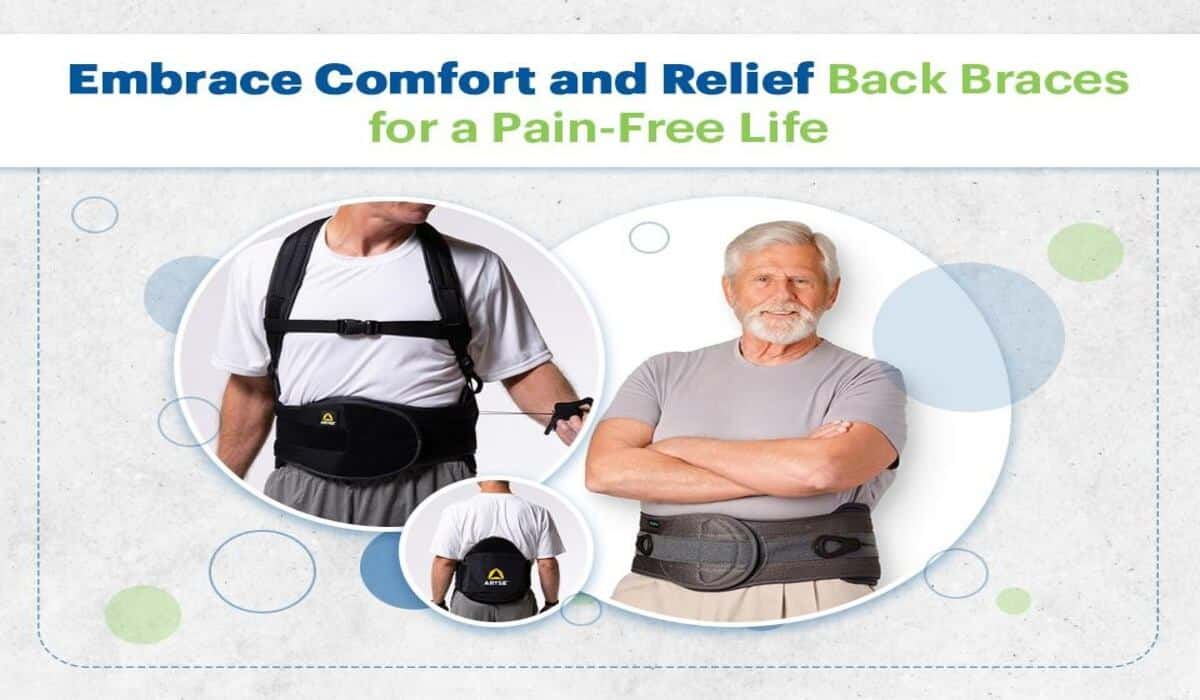Table of Contents
Living with chronic back pain can significantly impact your quality of life, making even simple tasks challenging and uncomfortable. Fortunately, back braces have emerged as an effective solution to help individuals find comfort and relief from back pain. These supportive devices can provide stability, promote proper posture, alleviate discomfort, and empower you to embrace a pain-free life. In this article, we will explore the causes and impact of back pain, assess the role of back braces in pain management, discuss the various types of back braces, understand how they work, provide tips for proper usage and care, and highlight the importance of seeking professional guidance. By the end, you will have a comprehensive understanding of how back braces can improve your overall well-being.
Understanding Back Pain: Causes and Impact
Back pain is a prevalent condition that affects millions of people worldwide. It can be caused by a variety of factors, including muscle strains, herniated discs, spinal arthritis, poor posture, and spinal abnormalities. Chronic back pain can have a significant impact on daily life, limiting mobility, interfering with work, and diminishing overall well-being. It is important to understand the causes and effects of back pain to effectively address and manage this condition.
When back pain becomes chronic, it is crucial to seek medical attention to determine the underlying cause and develop an appropriate treatment plan. A healthcare professional or orthopaedic specialist can conduct a thorough evaluation, including physical examinations and diagnostic tests, to identify the root cause of the pain and design an individualized treatment approach.
Assessing the Role of Back Braces in Pain Management

Back braces play a valuable role in pain management by providing support, stability, and relief to the affected area. They work by reducing pressure on the spine, supporting the muscles, and promoting proper alignment. While back braces are not a cure for underlying conditions, they can significantly alleviate discomfort and facilitate the healing process. When used in conjunction with other pain management strategies, such as exercise, stretching, and medication, back braces can enhance overall outcomes and improve the quality of life for individuals with back pain.
The Benefits of Back Braces
Back braces offer numerous benefits for individuals experiencing back pain or discomfort. Understanding these benefits can help you make an informed decision about using back braces as part of your pain management strategy. Here are some key advantages:
- Alleviating Pain: Back braces are designed to reduce pressure on the spine and support the surrounding muscles, providing effective pain relief. By offering targeted compression and stabilization, they help manage pain caused by conditions such as herniated discs, muscle strains, and spinal instability.
- Promoting Proper Posture: Many back braces are specifically engineered to improve posture by preventing slouching and encouraging a neutral spine alignment. By supporting the natural curves of the spine, back braces can help maintain a healthier posture, reduce strain on the back, and prevent long-term spinal issues.
- Enhancing Stability and Support: Back braces provide additional stability and support to the back muscles, ligaments, and spinal structures. This is particularly beneficial during physical activities, sports, or occupations involving repetitive motions or heavy lifting, reducing the risk of injuries and promoting safer movements.
- Aiding in Rehabilitation: Back braces play a vital role in the recovery process after back surgery or injury. They provide support, limit motion, and reduce strain on the affected area, facilitating smoother and faster rehabilitation.
- Psychological Support: Chronic back pain can take a toll on an individual’s mental well-being. Back braces provide a sense of security and support, instilling confidence and reducing anxiety associated with movement. This psychological support can contribute to a more positive mindset and improved overall quality of life.
How Back Braces Work
Back braces work by providing external support and compression to the back. Promoting proper alignment, and reducing strain on the spine and surrounding muscles. The specific mechanisms of action can vary depending on the type of brace and its intended purpose. Here are some common ways in which back braces work:

- Support and Stability: Back braces offer support to the muscles, ligaments, and spinal structures, providing stability to the back. This support helps reduce excessive movements that can worsen pain or lead to injuries. By limiting motion, back braces can facilitate healing and prevent further damage in cases of injury or postoperative recovery.
- Compression: Many back braces exert gentle compression on the back, which helps reduce inflammation, improve blood circulation, and alleviate pain. The compression provided by the brace can also support the surrounding soft tissues and promote a sense of comfort.
- Postural Alignment: Back braces designed for posture correction work by gently realigning the spine and encouraging proper posture. They help counteract the effects of slouching or improper spinal curvature, reducing strain on the back and promoting a more upright and aligned posture.
- Warmth and Muscle Relaxation: Some back braces are constructed with materials that provide warmth to the back, which can help relax muscles, increase blood flow, and alleviate muscle tension. The warmth generated by the brace can contribute to pain relief and a greater sense of comfort.
Lifestyle Modifications for a Pain-Free Life
In addition to incorporating back braces into your pain management routine, certain lifestyle modifications can further contribute to a pain-free life. Consider the following:
- Regular Exercise: Engaging in low-impact exercises and strengthening the muscles supporting your back can improve stability and flexibility. Reduce the risk of future injuries, and enhance overall spinal health. Consult with a healthcare professional or physical therapist to develop a personalized exercise program that suits your specific needs and abilities.
- Maintaining a Healthy Weight: Excess weight places additional stress on your back, exacerbating pain and discomfort. By maintaining a healthy weight through a balanced diet and regular exercise, you can alleviate strain on your back and reduce the likelihood of back pain.
- Ergonomic Practices: Pay attention to your posture and ergonomics, both at work and during daily activities. Ensure that your workspace is properly set up, use supportive chairs with lumbar support, and practice good posture while sitting, standing, and lifting heavy objects.
- Stress Management: Chronic stress can contribute to muscle tension and exacerbate back pain. Incorporate stress management techniques into your daily routine. Such as deep breathing exercises, meditation, and engaging in activities that promote relaxation and mental well-being.
- Quality Sleep: Adequate sleep is crucial for the body’s healing and recovery processes. Invest in a supportive mattress and pillows that promote proper spinal alignment. Further, maintain a consistent sleep routine to enhance restorative sleep.
- Avoiding Smoking: Smoking impairs blood flow, which can negatively impact the healing process and increase the risk of back pain. Quitting smoking or avoiding exposure to secondhand smoke can improve overall health and contribute to a pain-free life.
By implementing these lifestyle modifications alongside the use of a back brace. You can enhance the effectiveness of your pain management efforts and improve your overall well-being.
The Bottom Line
Remember that back braces are not a cure-all solution and should be used as part of a holistic pain management plan. Consulting with healthcare professionals, following usage instructions. As well as, gradually reducing dependence on the brace as your condition improves are important considerations. Embrace the comfort and relief offered by back braces and take proactive steps toward a pain-free life. Enabling, you to fully engage in the activities you love and experience the joy of improved overall well-being.
If you’re not sure what product is right for you or if you’re eligible for insurance coverage, Artik Medical Supply will provide the guidance you need. Their back braces feature adjustable compression systems and are available for lower and mid-back support. They can even communicate with your doctor to determine the best back brace for you. Contact them today to check for insurance coverage.


